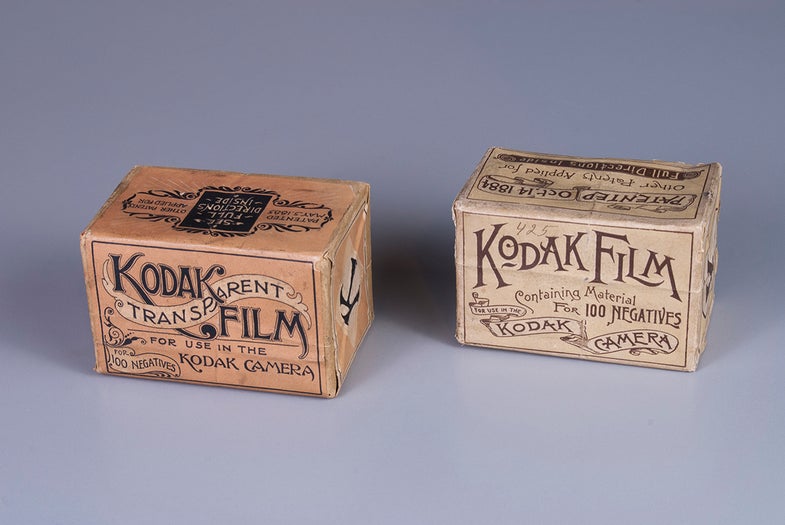Two Unexposed Rolls of Rare Century-Old Kodak Film Acquired by Eastman Museum
Very little roll film was made in the late 1800s, and now the Eastman Museum now has two of the oldest unexposed rolls of Kodak in existence


I may have a few relatively ancient rolls of film in my freezer, but none as old as the two Kodak rolls recently acquired by Rochester, New York’s Eastman Museum. The museum, which houses one of the world’s leading collections of photographic technology, had long hoped to get examples of these two film types back home to the place where they were first made more than 120 years ago.

The boxed rolls are so rare in part because most people sent their cameras back to Kodak for prints and reloading—a service that cost $10. But some camera buffs bought the roll film in boxes and loaded it themselves, a bargain at $2.50 as long as they didn’t accidentally expose it. The cameras could take 100 2½-inch-diameter circular pictures.
The Kodak Film (also called American Film) was made on a paper substrate and discontinued about 12 years after its invention; this box is from 1888 and the film stopped being manufactured around 1900. This box is the only one known to exist. Transparent film (this box is from 1889), had a more illustrious life. Made with a nitrate substrate, it was used in the first 35mm movie viewing device by Thomas Edison’s assistant.
Both rolls are now on view in the Eastman Museum’s collection.
The boxed rolls are so rare in part because most people sent their cameras back to Kodak for prints and reloading—a service that cost $10. But some camera buffs bought the roll film in boxes and loaded it themselves, a bargain at $2.50 as long as they didn’t accidentally expose it. The cameras could take 100 2½-inch-diameter circular pictures.
The Kodak Film (also called American Film) was made on a paper substrate and discontinued about 12 years after its invention; this box is from 1888 and the film stopped being manufactured around 1900. This box is the only one known to exist. Transparent film (this box is from 1889), had a more illustrious life. Made with a nitrate substrate, it was used in the first 35mm movie viewing device by Thomas Edison’s assistant.
Both rolls are now on view in the Eastman Museum’s collection.